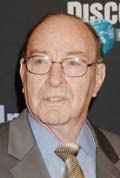
AP, Miami :
Apollo 14 astronaut Edgar Mitchell, who became the sixth man on the moon when he and Alan Shepard helped NASA recover from Apollo 13’s “successful failure” and later devoted his life to exploring physics, the mind, and unexplained phenomena such as psychics and aliens, has died in Florida. He was 85.
Mitchell died Thursday night at a West Palm Beach hospice after a short illness, his daughter, Kimberly Mitchell, said. Mitchell’s passing coincides with the 45th anniversary of the Apollo 14 mission from Jan. 31-Feb. 9, 1971.
Mitchell, one of only 12 humans to set foot on the moon, was not a typical strait-laced astronaut: In later years, he said aliens visited Earth and faith healers were legit. He attempted to communicate telepathically with friends at home during his Apollo mission. He had an “epiphany” in space that focused him on studying physics and mysteries such as consciousness.
“What I experienced during that three-day trip home was nothing short of an overwhelming sense of universal connectedness,” Mitchell wrote in his 1996 autobiography. “It occurred to me that the molecules of my body and the molecules of the spacecraft itself were manufactured long ago in the furnace of one of the ancient stars that burned in the heavens about me.”
In an emailed statement, NASA Administrator Charles Bolden called Mitchell, “one of the pioneers in space exploration on whose shoulders we now stand.”
Mitchell’s passion for exploration led him to become an astronaut, and he joined NASA in 1966. He helped design and test the lunar modules that first reached the moon in 1969 with Neil Armstrong and Buzz Aldrin.
Shepard, the first American in space in 1961, picked Mitchell to be on Apollo 13’s three-person crew. But they were bumped to the next mission so Shepard would have more time to train.
Apollo 13’s astronauts were nearly killed when an oxygen tank exploded as they neared the moon in 1970. They made it home safely, but never set foot on the moon. A year later, Shepard, Mitchell and Stu Roosa were the first crew to try again amid falling support for the moon missions from President Nixon, Congress and the public.
“Had we blown it, had it failed for whatever reason, that would probably have been the end of the Apollo program right there,” Mitchell said in 1997.
Fortunately, their mission, the third lunar landing and Mitchell’s only trip in space, was a success.
Shepard collected about 95 pounds of samples in more than nine hours walking the lunar surface. They showed for the first time that astronauts could walk long distances on the moon, covering nearly two miles on their second expedition on the surface. That proved the crews of later missions could walk back to their spacecraft if the buggy-like Lunar Rover broke down.
Their mission was best known to the public because Shepard became the first and only golfer on the moon. Mitchell joked when Shepard duffed his first shot: “You got more dirt than ball that time.” Less well known was that Mitchell made the only “javelin” throw on the moon when he tossed an unneeded metal rod.
But Shepard and Mitchell almost didn’t make it to the surface because of problems in the lunar module.

